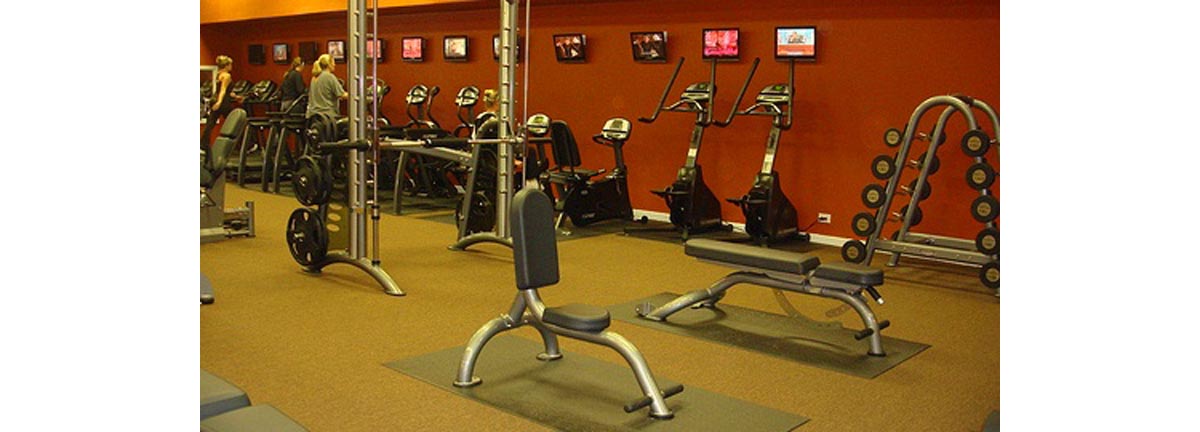Table of Contents
Do you really make the most of your time in the gym, or do you flit from one piece of equipment to the next, not really sure what to do? You can save time and get a better workout by following a set plan and ramping up your workout intensity.
Do Weights First
This might be the complete opposite of the advice you’ve heard before, and seem completely bizarre, but there’s good reasoning to doing weights before cardio.
Firstly, despite the very common misconception, weight training does burn calories. The calories you burn while lifting weights may not be as high as when you focus on cardiovascular activities, but weight training has a powerful afterburn effect. This is known as EPOC – Excessive Post-Exercise Oxygen Consumption. When you lift weights, your muscle tissue breaks down, in order to rebuild bigger and stronger. To make this happen, your metabolism increases to speed up the recovery process, push more oxygen and nutrients around the body, and help your nervous system recover. This means that your metabolism can remain elevated, and you burn more calories for between 24 and 72 hours after you’ve finished training. You don’t get that kind of boost from cardio.
Use a Full Body Approach
When it comes to weight training, we’re all guilty of only doing the things we enjoy, or only training the areas we want to improve. For guys, that usually means lots of bench presses and curls for the chest and biceps, and for the ladies, it’s often the abductor and adductor machine along with glute bridges and leg curls to firm those thigh and butt muscles.The catch with this though, is that not only can it cause muscular imbalances which lead to injury, but it’s not that effective for your goals either.
Spot reducing fat from certain areas by training them isn’t possible, as muscle and fat tissue are completely different. To get the best results, be it for fat loss or muscle gain, you need to train your whole body.
Use mainly compound exercises that work multiple muscle groups at once, as these hit more muscle fibers, burn more calories and increase muscle size and strength faster than machine or isolation exercises. Base your routines around the “big lifts” like barbell squats, dumbbell lunges, deadlifts, chin-ups and push-ups, and pressing and rowing variations. If you’re not too familiar with any of these exercises, or haven’t used free-weights before, just ask a trainer at the gym to demonstrate the correct techniques to you.
You need to go hard with your weights too. Each session you should aim to lift a bit more weight or perform an extra rep or two on every exercise. Progression is vital – if you train the same, you stay the same. That does not, however, mean that more reps is automatically better. Getting each rep perfect, using good form, is even more important.
Intensify Your Cardio
It can be easy to get into the same old routine when it comes to cardio. Plodding away on a stepper, sitting on a recumbent bike or reading a magazine while you do some incline treadmill walking is a nice, gentle way to get some CV in. But this isn’t doing what you want it to.Just like weight training, your cardio should get you sweating and panting. You can still use the same gym machines for your cardio, but switch to a high intensity type session. HIIT - High Intensity Interval Training burns more fat, increases fitness faster and maintains muscle mass far more than traditional, easy, low intensity aerobic work. Here’s a really simple, yet incredibly effective HIIT protocol to try –
- Pick any cardio machine
- Go at a steady pace for 45 seconds. Your heart rate should be around 100 to 120 beats per minute.
- Sprint as fast as you can for 15 seconds.
- Go back to the steady pace.
- Repeat six to eight times.
Wrap Up
So how long does a workout like this take?If you pick four weight exercises – one for your legs, one for your chest, one for your back and another for your shoulders, you can get that part of the session done in 25 minutes. The cardio should take no longer than eight minutes. Add in five minutes to warm up at the beginning and another five at the end, and your whole workout’s done in less than 45 minutes, yet you’ve done so much more than a two hour workout spent ambling between exercises.
If there’s one phrase that sums up optimizing your gym time, it’s this –
“Go Hard or Go Home”
- “Resistance Training and EPOC”., by Jeff M. Reynolds and Len Kravitz, Ph.D., Accessed on August 12, 2012 Retrieved from http://www.drlenkravitz.com/Articles/epoc.html
- Photo courtesy of personaltrainingcorpuschristi on Flickr: www.flickr.com/photos/personaltrainingcorpuschristi/4972058216
- Photo courtesy of personaltrainingcorpuschristi on Flickr: www.flickr.com/photos/personaltrainingcorpuschristi/4971443695

